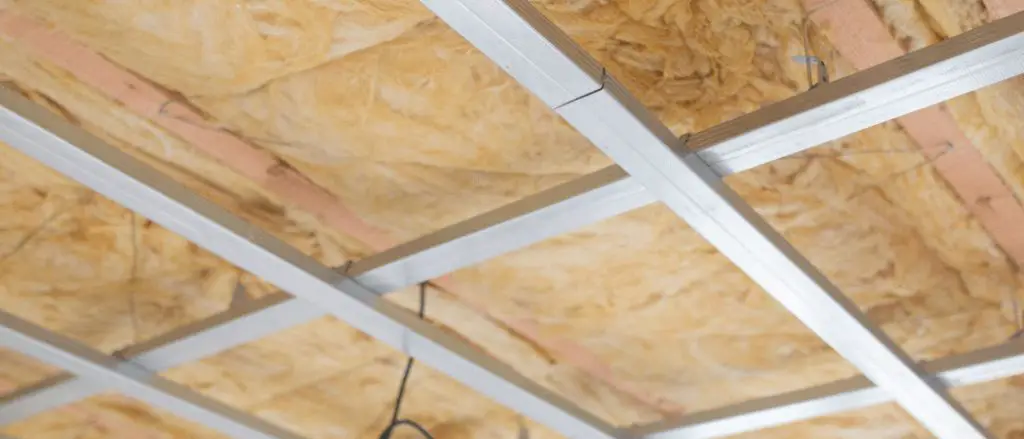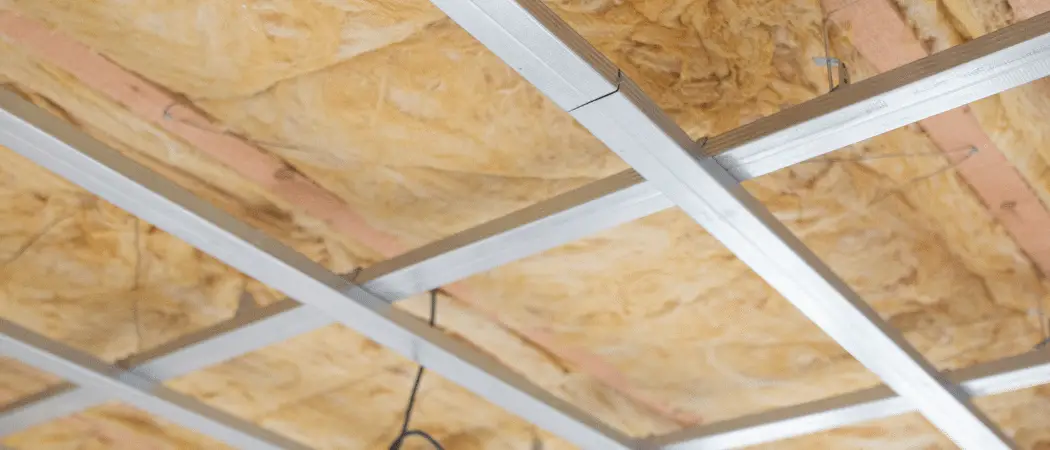To soundproof a hollow door, use weatherstripping or foam tape on the edges and add mass-loaded vinyl sheeting for increased sound isolation. Soundproofing a hollow door can significantly reduce noise transfer between rooms, creating a more peaceful and quiet environment within your home or office.
By following simple DIY soundproofing techniques, you can enhance privacy and minimize disturbances caused by sound leakage through hollow doors. Implementing these solutions on your hollow doors can make a noticeable difference in sound insulation, ensuring a more conducive atmosphere for focus, relaxation, or rest without investing in expensive soundproofing materials or professional services.
Take control of the acoustics in your space by effectively soundproofing your hollow doors today.

Understanding Hollow Doors
What Are Hollow Doors?
In order to soundproof a hollow door, it is crucial to understand what exactly a hollow door is. Hollow doors are lightweight and economical in nature, typically made with a frame, plywood or MDF (medium-density fiberboard) panels, and a honeycomb or cardboard core. Due to their construction, hollow doors have empty spaces inside, which allows for noise to easily pass through. These doors are commonly found in residential buildings, offices, and other spaces where cost efficiency is prioritized. They are often used for interior purposes, such as closets and bedrooms.
Why Soundproof A Hollow Door?
Soundproofing a hollow door can bring about several benefits. When sound waves are not blocked, they tend to pass through the door, resulting in noise leakage as well as poor privacy. Soundproofing a hollow door helps to minimize noise transmission between rooms, making the environment more peaceful and comfortable. Whether you are looking to create a quiet workspace, enhance the privacy of a bedroom, or reduce external noise intrusion, soundproofing a hollow door can significantly improve the acoustic insulation of your space. Plus, it is a cost-effective solution compared to replacing the entire door.

Identifying Noise Issues
Recognizing Common Noise Problems
Hollow doors can create significant noise issues due to their inability to absorb sound.
- Muffled voices
- Loud music
- Street noises
Impact Of Noise On Daily Life
Excessive noise can cause stress and disturbance in your daily activities such as work, sleep, and relaxation.
Choosing The Right Soundproofing Materials
Hollow doors are often the source of significant sound leakage, but the good news is that with the right soundproofing materials, you can make a significant difference. When it comes to soundproofing a hollow door, choosing the right materials is crucial in achieving the desired sound reduction. Let’s delve into the process of selecting the right soundproofing materials to effectively soundproof a hollow door.
Assessing Door Structure
Before diving into the selection of soundproofing materials, it’s crucial to assess the structure of the hollow door. Understanding the dimensions and the material composition of the door will help in determining the most suitable soundproofing solutions. Additionally, identifying any existing gaps or weak points in the door will be essential in guiding the selection of appropriate materials.
Soundproofing Material Options
When it comes to soundproofing a hollow door, several material options are available to effectively reduce sound transmission. Here are some commonly used soundproofing materials:
- Acoustic foam panels
- Mass-loaded vinyl (MLV)
- Soundproofing mats or blankets
- Weatherstripping tape
- Door sweep
Each of these materials has its own unique soundproofing properties, and it’s essential to consider the specific requirements and characteristics of the door before making a decision. Assessing the level of sound insulation needed and the ease of installation should also be factored into the selection process.

Sealing And Filling Techniques
Achieving soundproofing for a hollow door involves using sealing and filling techniques. By applying weatherstripping along the door frame and filling any gaps with acoustical caulk, you can effectively reduce noise transmission. Additionally, installing a door sweep at the bottom can further enhance soundproofing.
Identifying Gaps And Cracks
Identify any noticeable gaps or cracks in the hollow door to locate potential sound leakage points.
Choosing The Right Sealant
Select a quality sealant that is specifically designed for soundproofing to effectively fill gaps and cracks.
Filling Voids With Soundproofing Material
Use soundproofing material like acoustic foam or weatherstripping to fill voids and reinforce the door’s ability to block sound.
Installing Soundproofing Devices And Accessories
When it comes to soundproofing a hollow door, installing the right devices and accessories is crucial. By implementing these soundproofing solutions, you can significantly reduce the noise transfer between rooms and enjoy a quieter, more peaceful environment. In this section, we will explore three effective options for soundproofing your hollow door: door sweeps and bottom seals, weatherstripping techniques, and acoustic door panels.
Door Sweeps And Bottom Seals
Door sweeps and bottom seals are excellent soundproofing devices that prevent sound leaks through the gap between your door and the floor. These devices are easy to install and provide an effective barrier against noise intrusion. Here’s how to go about it:
- Measure the width of your door and purchase a door sweep that fits your door size.
- Position the door sweep at the bottom of the door, ensuring that it covers the entire width.
- Mark the screw holes on the door using a pencil or marker.
- Drill pilot holes on the marked spots and secure the door sweep in place using screws or adhesive, depending on the product’s instructions.
Weatherstripping Techniques
Weatherstripping is another effective method to soundproof your hollow door. It involves sealing gaps around the door frame to prevent noise from seeping through. Follow these steps to weatherstrip your door:
- Inspect the door frame and identify any visible gaps or cracks.
- Clean the surface around the gaps to ensure proper adhesion.
- Select a suitable weatherstripping material, such as adhesive-backed foam tape or silicone caulk.
- Cut the weatherstripping material to the appropriate length and apply it to the door frame, focusing on the areas with gaps.
- Press firmly to ensure a tight seal, and trim any excess material.
Acoustic Door Panels
If you want to take soundproofing to the next level, consider installing acoustic door panels. These panels are specifically designed to absorb and dampen sound waves, minimizing noise transmission. Follow these steps for installing acoustic door panels:
- Measure the dimensions of your door and purchase acoustic panels that fit accordingly.
- Attach the panels to the door using adhesive or nails, following the manufacturer’s instructions.
- Ensure that the panels cover the entire surface of the door for maximum effectiveness.
- For added soundproofing, you can also consider placing a layer of mass-loaded vinyl or soundproof curtains over the panels.
By employing these soundproofing techniques and accessories, you can effectively reduce noise transmission through your hollow door and create a more serene living environment. Experiment with these methods to find the combination that works best for your specific needs. So, get started on soundproofing your hollow door today and enjoy the benefits of a quieter, more peaceful home.
Additional Tips For Effective Soundproofing
For a hollow door, effective soundproofing involves adding mass to the door with dense materials like mass loaded vinyl. You can also install weatherstripping around the door to seal any gaps that could allow sound to pass through. Additionally, a door sweep at the bottom can further improve soundproofing.
When it comes to soundproofing a hollow door, addressing other noise sources is crucial for maximum effectiveness. By considering the room layout and furniture placement, you can further minimize noise transmission. Here are some additional tips to make your soundproofing efforts more efficient:
Addressing Other Noise Sources
To create a truly quiet environment, you need to address all potential noise sources. While soundproofing the hollow door is essential, it’s equally important to eliminate or reduce noise from other areas. Consider the following:
- Windows and walls: Inspect your windows for any gaps or cracks that may allow sound to infiltrate. Install weatherstripping or caulking to seal these openings and reduce noise transmission. If possible, hang heavy curtains or install soundproofing panels to further dampen sound.
- Electrical outlets and switches: These innocuous outlets and switches can serve as entry points for sound waves. Install foam gaskets behind switch plates and outlet covers to create a tighter seal and minimize noise leakage.
- Ventilation: While necessary for air circulation, vents can also let in unwanted noise. Consider installing acoustic vent covers or sound baffles to reduce sound transmission through ventilation ducts.
- Floors and ceilings: If you live in an apartment or have multiple stories, consider adding soundproofing materials to the floors and ceilings. This can help reduce noise from foot traffic or activities happening above or below your living space.
Room Layout And Furniture Placement
Believe it or not, the way you arrange furniture in your room can impact its soundproofing capabilities. Take note of the following tips:
- Strategic furniture placement: Position larger furniture pieces, such as bookshelves or sofas, along walls that are prone to sound leakage. These objects can help absorb and block sound waves.
- Create buffer zones: Designate certain areas in your room as buffer zones. By placing storage units or large plants in these areas, you can add an extra barrier between noise sources and your living space.
- Use rugs and curtains: Soft furnishings like rugs and curtains can help absorb sound and minimize its reflection. Opt for heavy, thick materials that have sound-absorbing properties.
By following these additional tips for effective soundproofing, you can enhance the overall acoustic quality of your living space. Remember, soundproofing is an ongoing process, and a combination of different methods will yield the best results.
Frequently Asked Questions For How To Soundproof A Hollow Door
Can I Make A Hollow Door More Soundproof?
To make a hollow door more soundproof, add weatherstripping around the edges and seal any gaps. Install a door sweep and replace hinges with quieter ones. Consider adding a soundproofing curtain or soundproof panels for further noise reduction.
How Do You Foam Fill A Hollow Core Door?
To foam fill a hollow core door, first, drill a small hole into the door near the top and bottom. Next, use a foam injection kit to inject expanding foam into the holes, allowing it to expand and fill the void within the door.
Finally, trim the excess foam and patch the holes to complete the process.
How Do You Soundproof A Solid Core Door?
To soundproof a solid core door, you can use weatherstripping and door sweeps, which help seal the gaps and prevent noise from entering or escaping the room. Additionally, adding a soundproofing material like mass-loaded vinyl or acoustic foam panels can further reduce sound transmission through the door.
How Do You Soundproof An Empty Doorway?
To soundproof an empty doorway, use weather-stripping or a door sweep to seal gaps, add a heavy curtain or soundproofing panels, and install a door soundproofing kit. These methods help reduce noise transfer and create a quieter environment.
Conclusion
To sum up, soundproofing a hollow door is feasible with simple, cost-effective solutions like weatherstripping, adding mass-loaded vinyl, or installing a door sweep. By following these tips, you can effectively reduce noise transfer and enhance privacy in your space. Soundproofing doesn’t have to be complicated or expensive!

